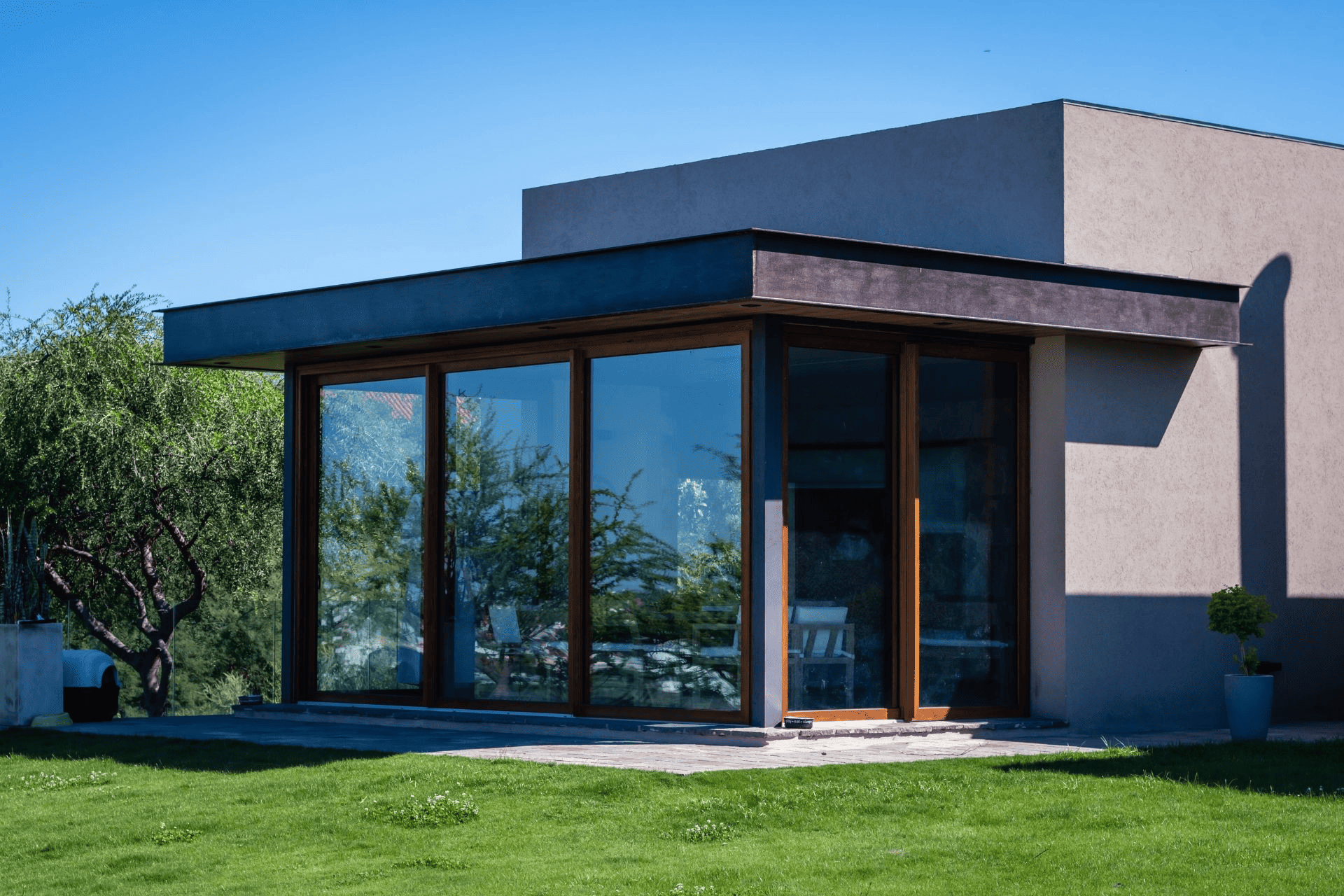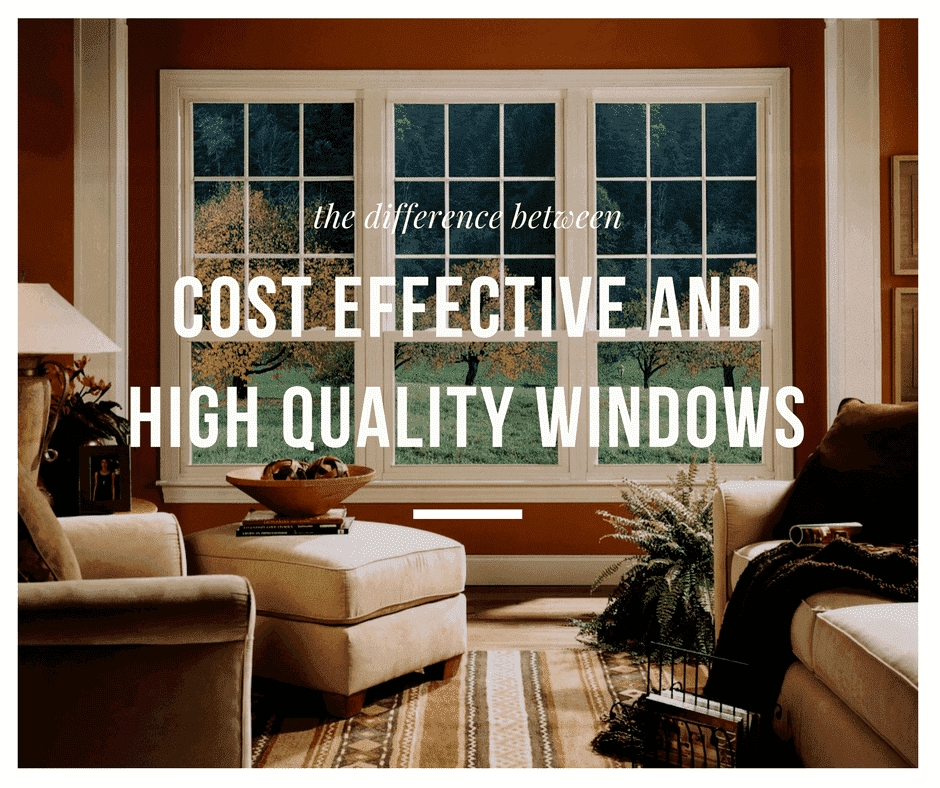If you have been looking at getting replacement windows for your home, you may have noticed the term “Low-E” glass being thrown around.
This feature is common in many modern window styles and offers a range of benefits over traditional windows. It’s also something to look out for by homeowners who want to enhance their home’s resale value and improve its energy efficiency.
But what exactly is Low-E coating, and why should you care about it?
We’ve broken down everything you need to know in this blog!
What Is Low-E Glass?
Low-E glass—also known as low-emissivity glass—is a type of coating designed to facilitate heat transfer from glass surfaces. It consists of a metallic oxide film that’s invisible to the naked eye and is used to allow lots of natural light to filtrate into the home.
Essentially, low emissivity protects your home from unwanted ultraviolet rays that can damage your furniture, fade your carpets, and even burn your skin. This is often measured through the solar heat gain coefficient.
Types of Low-E Glass
There are two types of Low-E coating: hard and soft coat. Both are microscopically thin, transparent coatings that reflect interior heat energy instead of absorbing it.
Hard coating is a type of metal coating that’s welded to the glass during the manufacturing process. The special coating is applied to the glass ribbon as it is forced out onto the float line and bonds to the hot glass surface in a process known as pyrolytic bonding.
Hard-coat glass is extremely durable as it is bonded directly to the glass. However, it does allow some infrared light in.
Meanwhile, soft-coat glass has metallic oxide particles attached to it through a chemical reaction. The glass pane is sealed in a vacuum chamber, and the coating is applied using Magnetron Sputtering Vapour Deposition (MSVD). This soft coat then needs to be sealed inside an insulating glass unit like the gas layer in a double pane window.
Soft-coated glass has a better R-value, meaning it has greater heat transfer abilities.

Which Low-E Coating Is Right for Me?
When shopping for energy-efficient windows, you should factor in where you live because different coatings work better in different environments. You’ll want to think about this when choosing your next set of replacement windows.
If You Live In Extremely Cold Climates…
If you live in an area that has extremely cold winters with mild summers, then a hard-coat Low-E coating will work best for you. In these locations, you need to have good heating and heat retention, so having energy-efficient homes is crucial.
A hard-coat allows some infrared light through the window, providing additional heat from the sun. It reflects longer wave radiation back into your home to trap more heat inside.
For anyone that lives in an area that experiences cold winters and hot summers, then soft-coat Low-E coatings would work best for your window glass.
Soft-coat offers superior solar heat gain and UV protection, keeping homes better insulated, whatever the weather. Overall, this will increase the comfort levels of your home while also helping you save more on your energy bills.
What Are the Advantages of Low-E Glass?
There are many advantages to having windows installed with Low-E coating, but its main selling point is its energy efficiency. Doors and windows equipped with it do a better job at keeping long-wave infrared energy from coming in during the winter and out during the summer.
Having passive Low-E coatings reflect heat back to its source, whether outside or inside the window. The coating also won’t wear or scratch off because it is applied to the interior side of the glass, protected from harmful ultraviolet light.
Low-E coating also prevents window condensation, making your window frames less prone to moisture damage and wood rot.
Aside from the value it adds to your property, windows with passive Low-E coatings qualify for tax credits. This lowers the money you pay upfront, and the cost savings can be quite substantial in the long run.

What Are the Disadvantages of Low-E Glass?
One of the disadvantages of having windows with Low-E coatings is the cost. Glass with Low-E coating is more expensive than standard windows because of the treatment that the glass undergoes during the manufacturing process.
Another disadvantage is that passive Low-E coatings give the window a bit of a “haze” because of the film, and this impacts the visibility of its glass surface. So, if you’re very particular about the aesthetics of your window glass, it might be best to stick to standard models.
Low-E coatings are nonetheless a great investment to increase your home’s energy efficiency, improve its curb appeal, and enhance your property’s resale value.
Get Energy-Efficient Windows and Doors With Clera
A window that will save you money on your cooling and heating costs is a worthwhile investment. But before you go out shopping for new replacement windows, you should get helpful advice from professionals first and have them help you weigh in on your options—we’re more than ready to assist you at Clera Windows + Doors!
We’re the leading provider of windows and doors in Canada, custom-making all of our products in our local manufacturing facility.
We’ve been in the business of providing comfort and security for numerous households across the country for over 40 years. We are so confident in our craftsmanship that we include a written, lifetime factory warranty on our products.
Check out our premier Low-E glass collections, or contact us for a quick quote!






